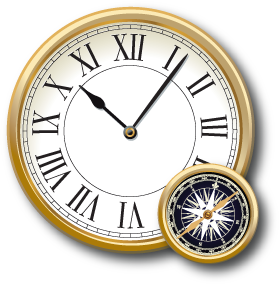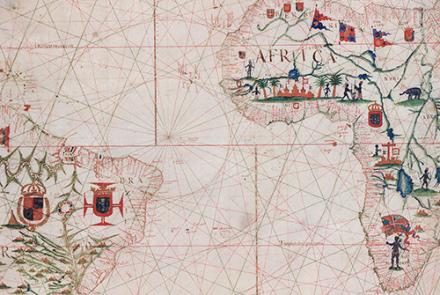Mariners achieved remarkable feats of exploration using only the simplest tools.
Before accurate ship clocks were common, European navigators paid careful attention to time derived from the Sun, Moon, and stars. Aware of the risks, seafarers relied on their tools, know-how, and sometimes even luck when they ventured out on the world’s uncharted, dangerous oceans.
Early mariners made efforts to chart distant shorelines and ocean features even without first-hand knowledge. Europe’s first sea charts were simple outlines of coastlines made to supplement written or oral directions. They later evolved into more accurate navigation aids based on astronomy and mathematics.













